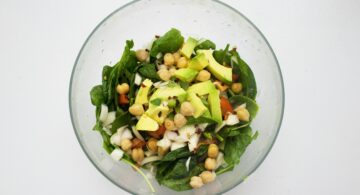Broccoli and Why You Want It
If you have children, at some time or another you’ve probably urged them to eat their broccoli, “Children, eat your trees!”
Then, there’s former President George Bush, Sr., who complained, “I do not like broccoli. And I haven’t liked it since I was a little kid and my mother made me eat it. And I’m President of the United States and I’m not going to eat any more broccoli.”
In spite of former President Bush’s aversion to broccoli, it is one of those rare foods that merits the title of superfood.
Cruciferous Vegetables
Broccoli belongs to the elite group of vegetables known as cruciferous or brassica. In general, cruciferous vegetables are rich in vitamins, fiber, and disease-fighting phytochemicals. Some of the more common cruciferous vegetables include:
|
|
|
|
|
|
|
|
|
|
|
|
|
|
|
10 Health Benefits of Broccoli
Yet, broccoli stands out even among the cruciferous vegetables as a superfood—and for good reason! We would be hard-pressed to find a more nutrient-dense food on earth.[1] Over 300 research studies have been conducted on broccoli to unveil its special healing properties—especially its ability to prevent cancer.[2] Even if you would have previously agreed with President Bush, after reading these 10 health benefits of broccoli , you may decide to learn to like broccoli.
1. Detoxes your body.
Broccoli uniquely contains three glucosinolate phytonutrients in a special combination that support all three steps of the detoxification process: activation, neutralization, and elimination.[3]
2. Helps prevent and fight cancer.
Due to broccoli’s distinctive combination of antioxidant, anti-inflammatory, and detoxification components it can lower your risk of cancer and fight existing cancer cells. This is especially true in the case of breast, pancreatic and prostate cancer.[4] As little as ½ cup per day can provide these cancer-fighting benefits.[5]
3. Lowers cholesterol.
When steamed, broccoli’s fiber-related components bind together with bile acids in the digestive tract and help lower cholesterol.[6]
4. Balances levels of vitamin D.
One of the issues with our chronic vitamin D deficiency is keeping our vitamin D metabolism in balance when we take large supplemental doses of the vitamin. The benefit of this superfood is that Broccoli’s high levels of vitamins A and K neatly address this issue.[7]
5. Reduces inflammation.
Broccoli reduces inflammation in the body in at least two ways. First, the isothiocyanates (ITCs) coming from the glucosinolates found in broccoli reign in the body’s inflammatory response mechanism. Second, an over-active inflammatorysystem is often the result of a lack of omega-3 fat in the diet. Broccoli provides a great natural source of omega-3 fats.[8]
6. Good for your gut.
Broccoli can help protect the digestive system from gastritis, ulcers, and stomach cancer due to the protection it offers against the bacterium Helicobacter pylori—a very common cause of bacterial infections.[9]
7. Helps prevent birth defects.
Broccoli contains an abundance of folate, the B vitamin that is essential for preventing birth defects like spina bifida. Deficiency in folate may be the most common deficiency in the world—solved by eating broccoli.[10]
8. Reduces risk of cataracts.
The phytochemical carotenoid antioxidants lutein and zeaxanthin that are also plentiful in broccoli are known to lower the risk of cataracts and promote eye health.[11]
9. Builds healthy bones.
A cup of broccoli not only contains 41 mg of calcium, but 79 mg of vitamin C as well. The vitamin C promotes the absorption of calcium. The vitamin K in broccoli also contributes to bone health and aids in the clotting of blood.[12]
10. Decreases risk for heart attack and stroke.
Full of flavonoids, carotenoids, folate, potassium, and vitamins C, E and B6, broccoliis well-equipped to help prevent heart disease.
How to Select and Prepare Broccoli
Purchase organically grown broccoli that has a dark green, sage or purple-green color. If the florets are yellow, pale green, or limp they are old, or too mature—don’t buy them. If leaves are present, they should be fresh looking and not wilted.
At home, store broccoli in a plastic bag or container in the refrigerator for up to 10 days. Do not wash before refrigerating as this will promote spoilage.[13]
You can enjoy broccoli raw or cooked. The recommended method for cooking is steamed (not sitting in water). Steaming maximizes flavor and nutritional value, although you can stir-fry it on low heat as well for as short a time as possible to ensure nutrient retention. Boiling broccoli in water will leech out many of its nutrients.[14]
Tip: sometimes when enclosed, broccoli can give off he unpleasant odor of sulfur. This is not harmful. To remedy this and to stimulate enzyme activity, simply slice the broccoli and let it sit for a few minutes before eating or cooking.[15]
Cut florets into quarters to produce even cooking throughout. The stems and leaves are also delicious and nutritious. Steam the broccoli for just 5 minutes. Some people find cruciferous vegetables bitter. Adding salt will counter the bitter taste.
Recipes
Simply enjoy broccoli florets steamed and serve with butter and your favorite spices.
For a colorful and healthy medley, steam both broccoli and cauliflower florets together and serve with butter and season with salt and pepper. You can also add broccoli florets to a salad or soup.
Beef and Broccoli[16]
Ingredients for four servings
- 3 tablespoons organic cornstarch or arrowroot
- ½ cup water
- 2 tablespoons water
- ½ teaspoon garlic powder
- 1 lb. boneless round steak or 1 lb. charcoal chuck steak, cut into thin 3-inch strips
- 2 tablespoons olive oil
- 4 cups broccoli florets
- 1 small onion, cut into wedges
- 1/3 cup Braggs liquid aminos (tastes like soy sauce but contains less sodium)
- 1 teaspoon ground ginger
- 2 cups hot cooked brown rice or quinoa
Directions
- In a bowl, mix 2 tablespoons cornstarch (or arrowroot), 2 tablespoons water and garlic powder until smooth.
- Add beef to the mixture and stir in to coat the beef.
- In a large skillet, add 1 tablespoon olive oil and stir-fry beef over low heat until cooked, but still tender. Remove beef from skillet and keep warm.
- In the skillet, stir-fry broccoli and onion in the remaining oil for 4-5 minutes.
- Return the beef to the skillet with the broccoli.
- Combine liquid aminos, ginger, 1 tablespoon cornstarch (or arrowroot), and ½ cup water until smooth.
- Cook and stir for 2 minutes.
- Serve over rice or quinoa.
Healthy Broccoli Salad[17]
Ingredients for 6 to 8 servings
- 1 head of broccoli
- 6-8 slices cooked bacon crumbled
- ½ cup chopped red onion
- ½ cup raisins
- 8 oz. organic sharp cheddar cheese, cut into very small chunks
- 1 plain greek yogurt
- 2 tablespoons white vinegar
- ½ cup halved cherry tomatoes
- Salt and freshly ground black pepper
- Stevia, to taste (optional)
Directions
- Remove leaves and tough part of broccoli stalk and wash broccoli.
- Cut the florets and stem into bite-size pieces and place in a large bowl.
- Add the crumbled bacon, onion, raisins, and cheese.
- In another small bowl, combine the remaining ingredients for the dressing and stir well.
- Add the dressing to the salad and toss gently.
Broccoli is one of those versatile vegetables that goes with practically any meat, and any meal. You can even mix leftover broccoli into your scrambled eggs for breakfast—yum!
See if you can come up with three unique ways to serve broccoli in the coming week. Try your recipes and let us know what you think of them.
Oh, and while you’re enjoying the fresh taste of broccoli, remember all the amazing health benefits of this superfood you’re experiencing!
Sources:



















